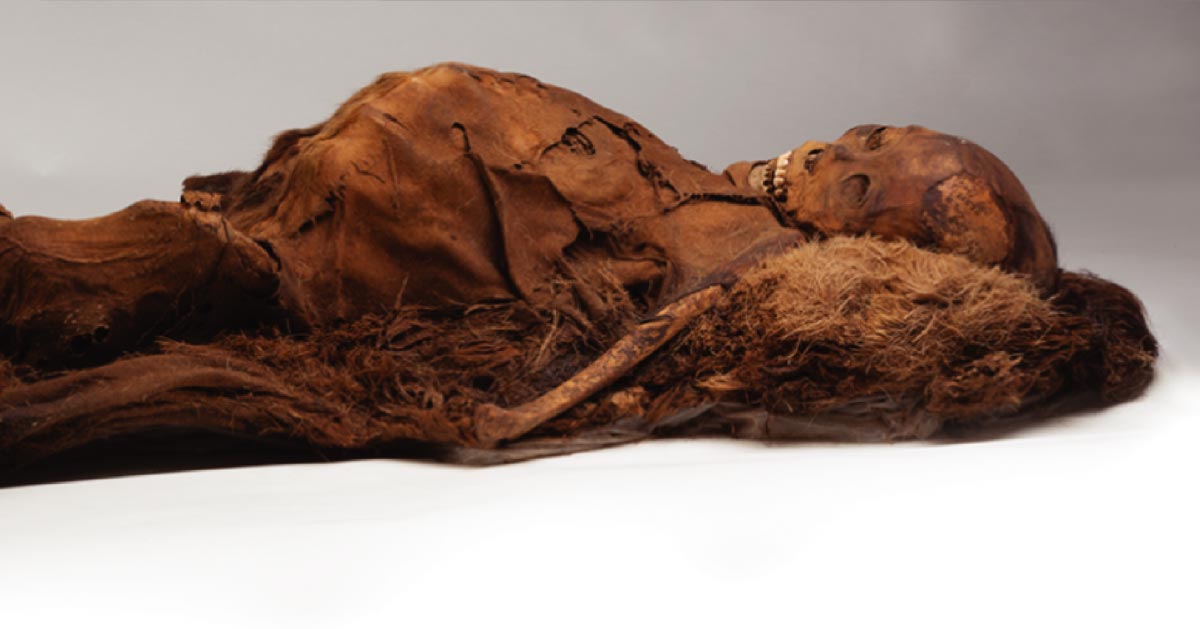Despite feasting on omega-3 rich diets of fish, which is thought to protect against plaque build-up in the arteries, 500-year-old Inuit mummies discovered in Greenland tell scientists of their suffering from clogged-up arteries.
Atherosclerosis is a condition in which the walls of arteries become blocked with fat and calcium and it is known this condition was suffered at least 6,000 years ago but none of the human remains studied thus far were known to eat a marine-based diet. Now, however, researchers have studied four Inuit mummies and found evidence of arterial clogging.

Omega 3 Taken to Task
Atherosclerosis is the build-up of plaques of fat, cholesterol and calcium in one’s arteries and the disease is a leading cause of death in modern wealthy countries, thought to be caused by poor dietary control. However, a new paper published in the journal JAMA Network Open challenges this commonly held notion after scientists studied the remains of four 16th-century Inuit hunters found in Greenland who also suffered from clogged-up arteries, despite their diets being rich in omega-3 fatty acids.
While the condition is often seen as resulting from modern lifestyles and diets, evidence of atherosclerosis has been found in human remains dating back as far as around 4,000 BC, but none of those tested bodies had eaten a diet rich in omega-3 fatty acids.

Calcification in Another Ancient Nation
Four incredibly well-preserved 16th-century Inuit mummies who ate omega 3-rich diets were tested with a view to seeing if the fatty acid improved arterial health, and the results suggest diets rich in omega-3 may not ᴀssure resistance to arterial plaque build-up, leading to the researchers considering that other factors might be at play.
According to a report in The Daily Mail , a team of scientists led by cardiologist L. Samuel Wann of Ascension Healthcare in Milwaukee studied the Inuit mummies taken from the collections of the Peabody Museum of Archaeology and Ethnology in Cambridge. Originally discovered on the island of Uunartaq, off the coast of Greenland in 1929 and dated to the 1500s, the mummies include two men and two women between the ages of 18–30.
Living in stone huts supported with whale bones and seal skins, the kayak hunters would have used wooden spears, bows and arrows to kill fish, marine mammals, birds and caribou, and with their greatly marine-based diets their veins would have surged with omega-3 fatty acids. But CT scans of the mummies’ insides were analyzed by Dr Wann and his team of four cardiologists and two radiologists which showed ‘calcified atheroma’ which is an accumulation of fatty plaque material in the arteries, similar to modern humans with atherosclerosis.

Indoor Fires Might Be Blamed
The condition, and the diseases it can cause, is the single biggest cause of death in the developed world and is responsible for one in three fatalities. Over time, blood vessels harden and narrow, which restricts the flow of blood around the body, and when these plaque deposits rupture they form a blood clot that can further block the flow of oxygenated blood which can result in a stroke or heart attack.
According to the Heart Research Insтιтute atherosclerosis often begins in childhood and worsens with age damaging the endothelium, a thin layer that keeps the inside of our arteries smooth. Once damaged, ‘bad’ cholesterol accumulates in the artery wall the body sends immune cells to clean up this cholesterol, which can then get stuck in the damaged site and this is what builds up over time leading to blockages.
This new study presents evidence for the “presence of calcified plaques in the mummified remains of 3 young Inuit individuals living 500 years ago,” the researchers wrote in their paper, and that omega 3 rich diets might not guarantee against plaque buildup as currently believed. However, according to Discover Magazine the researchers urge caution for other factors might be at play, like environmental smoke produced by the use of indoor fires.





